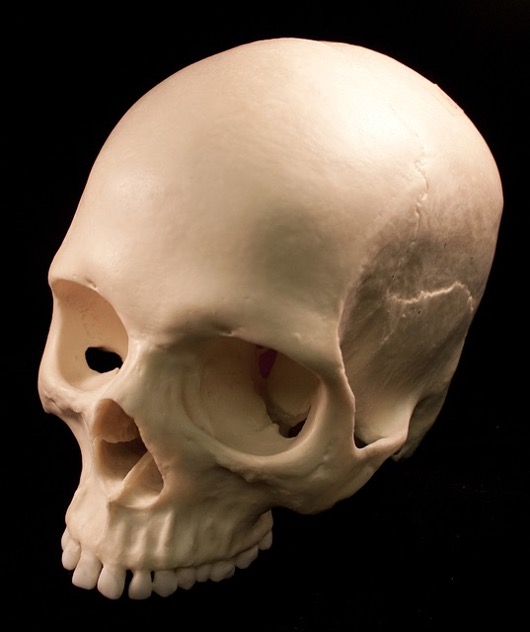Forensic anthropology—the scientific study of human remains—occurs in medico-legal or crime contexts. This relatively new field brings together various academic disciplines to assist in legal cases that deal with the identification of deceased people.
Professor Jay Levi is a professor emeritus of anthropology, global traveler, and author, and below he provides a breakdown of the field of forensic anthropology and how it came to its current place of prominence in criminal investigation and popular culture.
To truly understand this unique profession and how it evolved from various other fields, one needs to start at the beginning. In this case, that beginning is the field of the forensic sciences.
Origins of the Profession
Forensic science can trace its roots back to the end of the 19th century when law enforcement first sought out this kind of expertise to help solve a few grisly murders, all of which involved the examination of body fragments and bones.
However, Jay Levi explains it would take about three decades for the relationship between law enforcement and forensic scientists to be formally acknowledged. It was the numerous gangland killings in the United States, mainly during the 1930s, in which law enforcement came to realize how much they needed scientific analysis to solve these crimes.
A gangland murder is a murder connected to organized crime. The trouble began in 1920 with the beginning of Prohibition. All over the country, gangs profiting from alcohol's illegal production and transportation started to emerge. This was the era of Al Capone, police corruption, and crime. By 1920, more than 12,000 murders were committed every year across the country.
Jay Levi says the high homicide rates presented a unique set of circumstances to create a perfect environment for forensic science to flourish. Both local law enforcement and the newly established Federal Bureau of Investigation were struggling with a lack of modern crime-solving tools and training and dangerously competent criminals. The FBI established the
Criminology Laboratory, turning to forensic scientists and physical anthropologists to solve these murders and formally establishing a relationship between the two.
World War II
Following the crime-ridden 1920s and 1930s, both World War II and the Korean War contributed to developing an information database that would eventually become the basis for forensic anthropologists today.
Professor Jerome Levi notes that these professionals faced the monumental task of identifying dead soldiers. Most importantly, these soldiers had established health records with the military. Anthropologists were able to not only identify these soldiers but examine their remains through the lens of dental records, illness history, height, and age, which had not been done before. This research led to the formation of one of the first databases of skull and bone statistics.
Because of this vast database and the ones that followed, there are now more thorough scientific ways to identify the deceased because there are ways to reference them, according to Professor Jerome Levi. Professionals can even potentially identify what kind of work a person has done based on their bones. For example, someone with a bony ridge on their wrist has most likely spent their life working with their hands.
Morphing into Forensic Anthropology
Professor Levi says this is when forensic anthropology became officially established as a field and began to resemble what it is today. Specific forensic anthropological studies began in the United States during the 1970s when scientists established a “big four” necessary to determine any set of skeletal remains: stature, ethnicity or ancestry, sex, and age at death.
A few forensic anthropologists gained notoriety during this time, and no one more so than the world-renowned forensic anthropologist
Clyde Snow. The American-born Snow helped identify several figures, including the infamous Nazi war criminal Joseph Mengele, who fled to Brazil after Germany's loss in WWII. Snow also helped to identify the victims of serial killers such as John Wayne Gacy and Jeffrey Dahmer and the victims of the 1995 Oklahoma City bombing.
Although Snow did not take part in it, forensic anthropology was also critical in helping to identify the victims of the September 11 terrorist attacks on the World Trade Center.

Modern Goals
Today, the main focus of forensic anthropology is to determine the identity of a dead person as well as the manner and cause of that person's death. To accomplish this, professionals in this field focus on extracting information regarding the life and condition at the time of the individual's death. This process also involves identifying characteristics that forensics can determine from skeletal remains.
Jay Levi reports that forensic anthropologists work to identify a person from skeletal remains and mass death scenarios like terrorist attacks, mass transit crashes, and natural disasters. Some aspects of this modern work include:
- Pathologies of the deceased, or determining if the deceased person suffered from any illness or condition
- Craniofacial reconstructions, which use facial approximations to create a rendering of what a victim may have looked like
- Identifying the manner and cause of death by trauma analysis
- Determining what kinds of events or conditions have affected skeletal remains since death, known as taphonomy
- Postmortem interval, which refers to figuring out how long ago the person died
- Species identification, which involves identifying remains that are not human. This often occurs during mass death scenarios when they seek out human remains.
- Crime scene mapping. Sometimes referred to as forensic archeology, this involves recovering additional information at crime scenes.
Conclusion
Jay Levi explains that the field of forensic anthropology is ever-changing thanks to modern techniques being refined, discovered, and utilized in new ways. Professionals have been able to do extraordinary things, from bringing closure to victims' families to learning more about how King Tutankhamun lived his life. However, none of this would have been possible without the unique origins of forensic anthropology.
